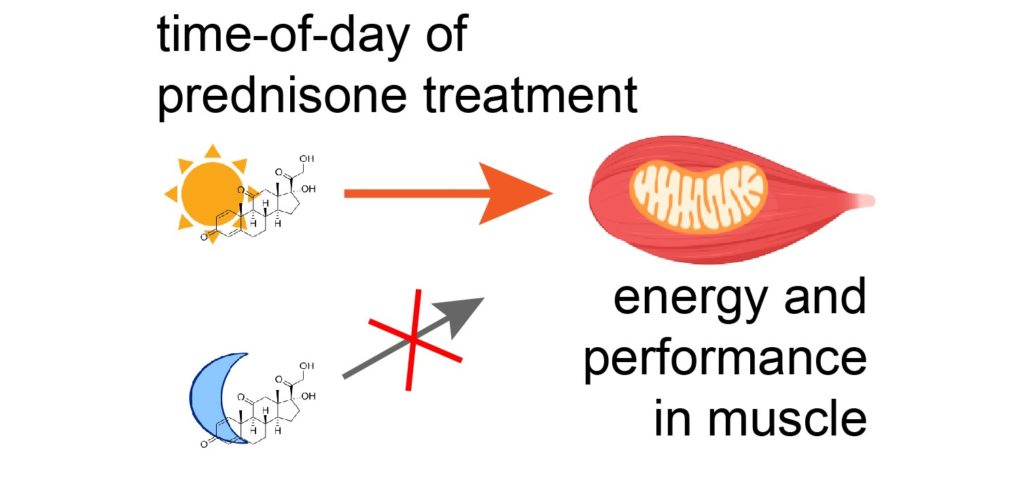Mattia Quattrocelli, PhD
- Assistant Professor, UC Department of Pediatrics
- mattia.quattrocelli@cchmc.org
- 513-517-1221
- 513-636-5958
About
Biography
My lab investigates molecular mechanisms and translatable biomarkers that play a role in the dysfunction and rescue of striated muscles. Our lab aims to combine genetics, epigenetics and metabolism to garner a deeper understanding of muscle physiology and pharmacology.
An essential focus of the lab centers on "precision dosing" for glucocorticoid steroids in heart and muscle regulation. Glucocorticoids, such as dexamethasone, prednisone and deflazacort, are widely used as immunosuppressants. They have a pervasive, yet overlooked, impact on metabolic homeostasis and striated muscle function. We are investigating how repetitive versus pulsatile regimens of glucocorticoids remodel energy production and performance in several contexts of disease, including obesity, unhealthy aging and heart failure.
Moreover, we are leveraging the newly discovered pharmacological mechanisms to expand the concept of precision dosing for these drugs to "chrono-pharmacology." In this line of investigation, we are learning what circadian and molecular mechanisms govern steroid pharmacology and physiological response in striated muscles. Previously, we discovered that a change in intake frequency dramatically changes the effects of glucocorticoid steroids from pro-obesity to anti-obesity.
I have been a researcher for over 15 years and began my work with Cincinnati Children's in 2020. I am honored to be the recipient of several grants and awards, including:
- National Institutes of Health (NIH) National Institute of Aging (NIA) R01AG078174-01 (07/2022-06/2027) Quattrocelli (PD/PI); Title "Coordinated mechanisms to rescue bioenergetics and sarcopenia in aging."
- NIH National Institute of Diabetes and Digestive and Kidney Diseases (NIDDK) R03 DK130908-01A1 (07/2022-06/2024) Quattrocelli (PD/PI); Title "Role of circadian rhythm and intermittent dosing in muscle triglyceride lipase induction by glucocorticoids."
- National Center for Education (NCE 2023) NIH National Heart, Lung, and Blood Institute (NHLBI) R56 HL158531 (10/2021-09/2022) Quattrocelli (PD/PI); Title "Chrono-mechanisms of cardiometabolic pharmacology."
- Cincinnati Children's Research Foundation, Department of Pediatrics and Surgical Services, Center for Stem Cell and Organoid Medicine CuSTOM Research Pilot Grant (07/2022-06/2023) Quattrocelli (PD/PI); Title "Defining the role of the hepatic glucocorticoid receptor in cholesterol metabolism."
- Cincinnati Children's Research Foundation, Department of Pediatrics and Surgical Services, Heart Institute Translational Grant (03/2021-03/2023) Quattrocelli (PD/PI); Title "Bioenergetic Rescue of Human Myocardium by Glucocorticoids."
- Cincinnati Children's Research Foundation, Department of Pediatrics and Surgical Services, Heart Institute Trustee Award grant (01/2021-01/2023) Quattrocelli (PD/PI); Title "Pharmacological Mechanisms Enhancing Adiponectin Sensitivity in Dietary Obesity."
- NIH (NCE 2023) NIDDK NIH Development Award K01 DK121875-01 (07/2019-07/2022) Quattrocelli (PD/PI); Title "Glucocorticoid and circadian clock coregulation of insulin sensitivity and metabolism."
Additional recognitions and awards include:
- Silver Medal Award at Jamboree International Genetically Engineered Machine (IGEM) International Competition, Massachusetts Institute of Technology (MIT), USA (2008)
- First European Molecular Biology Organization (EMBO) Prize for Poster Presentation at Advanced Scientific Computing Research (ASCR) EMBO Meeting, Paris, France (2011)
- International Society for Stem Cell Research (ISSCR) Travel Grant for 10th ISSCR International Congress, Yokohama, Japan (2012)
- Flanders (FWO) Fellowship (postdoctoral fellowship), Belgium (2013)
- Duchenne Parent Project Award for Best Presentation at 11th Indian Institute of Management (IIM) International Congress, Italy (2014)
- French Muscular Dystrophy Association (AFM) Telethon Trampoline Grant (mentored research grant), Belgium (2015)
- Muscular Dystrophy Association American Association of Neuromuscular & Electrodiagnostic Medicine (AANEM) Development Grant #479350 (2017)
- Postdoctoral Professional Development Travel Award from Northwestern University (2018)
- NIH Outstanding Poster Award at New Directions in Biology and Disease of Skeletal Muscle Conference, New Orleans, LA (2018)
- Federation of American Societies for Experimental Biology (FASEB) Travel Award for Nutrient Sensing and Metabolic Signaling Conference, Snowmass, CO (2018)
- Poster Award, Department of Pharmacology Retreat, Northwestern University, Chicago, IL (2019)
- NIH NIDDK K01 Development Award #1K01DK121875-01 2021 Cincinnati Children's Research Foundation (2019)
- Trustee Award American Diabetes Association (ADA) Certificate of Recognition as Speaker in the Exercise Physiology Hot Topic Discussion, awarded during ADA Conference, New Orleans, LA (2022)
BS: Biotechnologies, University of Pavia, Italy, 2006.
MS: Experimental and Applied Biology, University of Pavia, Italy, 2008.
PhD: Biomedical Sciences, Catholic University of Leuven (KU Leuven), Belgium, 2013.
Interests
Muscle and heart physiology; pharmacology; epigenetics; metabolism
Publications
Intermittent glucocorticoid treatment improves muscle metabolism via the PGC1α/Lipin1 axis in an aging-related sarcopenia model. The Journal of Clinical Investigation. 2024; 134:e177427.
Comprehensive Analyses of Muscle Function, Lean and Muscle Mass, and Myofiber Typing in Mice. Bio-protocol. 2023; 13:e4617.
Effects of Glucocorticoids in Murine Models of Duchenne and Limb-Girdle Muscular Dystrophy. Methods in molecular biology (Clifton, N.J.). 2023; 2587:467-478.
Impact of circadian time of dosing on cardiomyocyte-autonomous effects of glucocorticoids. Molecular Metabolism. 2022; 62:101528.
Intermittent prednisone treatment in mice promotes exercise tolerance in obesity through adiponectin. The Journal of Experimental Medicine. 2022; 219:e20211906.
Muscle mitochondrial remodeling by intermittent glucocorticoid drugs requires an intact circadian clock and muscle PGC1α. Science Advances. 2022; 8:eabm1189.
Genetic modifiers of muscular dystrophy act on sarcolemmal resealing and recovery from injury. PLoS Genetics. 2017; 13:e1007070.
Intermittent glucocorticoid steroid dosing enhances muscle repair without eliciting muscle atrophy. The Journal of Clinical Investigation. 2017; 127:2418-2432.
Mesodermal iPSC-derived progenitor cells functionally regenerate cardiac and skeletal muscle. The Journal of Clinical Investigation. 2015; 125:4463-4482.
From the Blog
Two-Faced Gene Variant Appears Good for Men, Bad for Women
Mattia Quattrocelli, PhD7/9/2025
Obesity and Prednisone: Weekly Dose ‘Strikingly Different’ Outcomes vs. Daily
Mattia Quattrocelli, PhD4/1/2022
Steroid Treatments for Duchenne Muscular Dystrophy May Depend on the Clock
Mattia Quattrocelli, PhD2/18/2022






